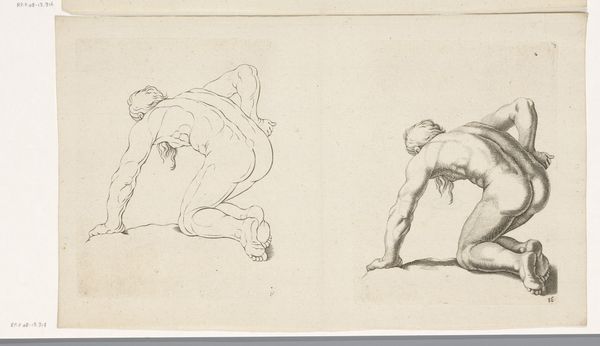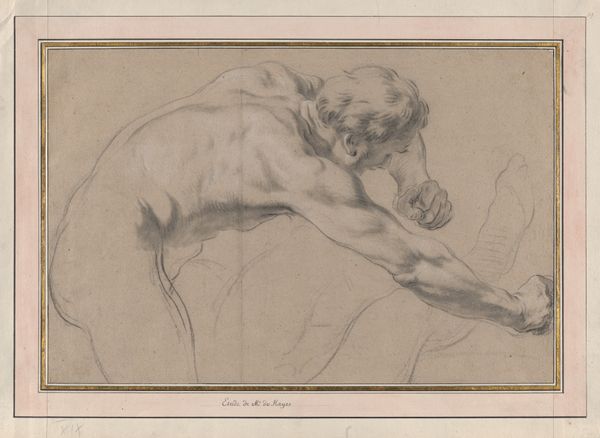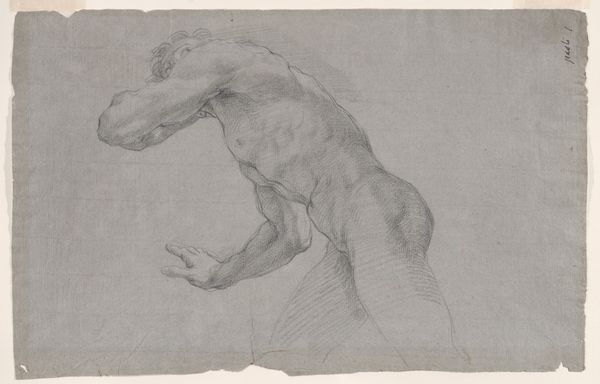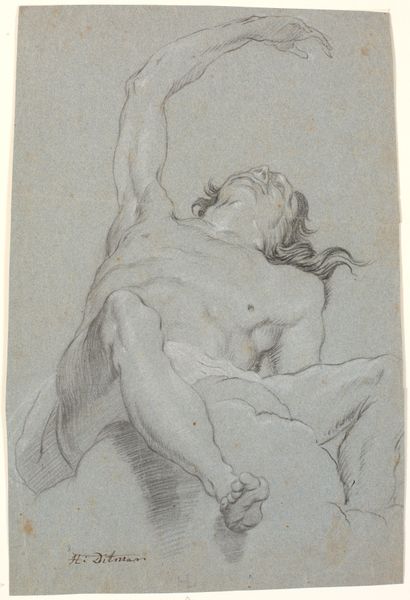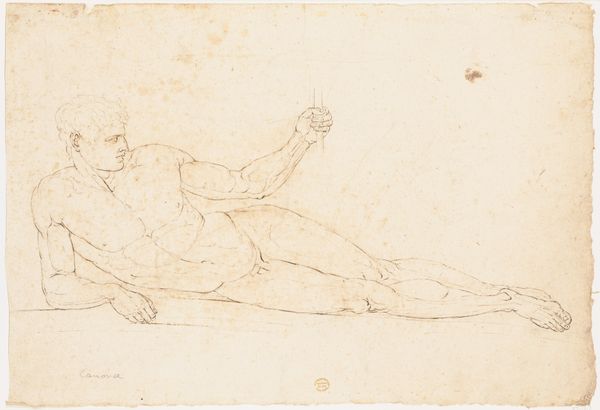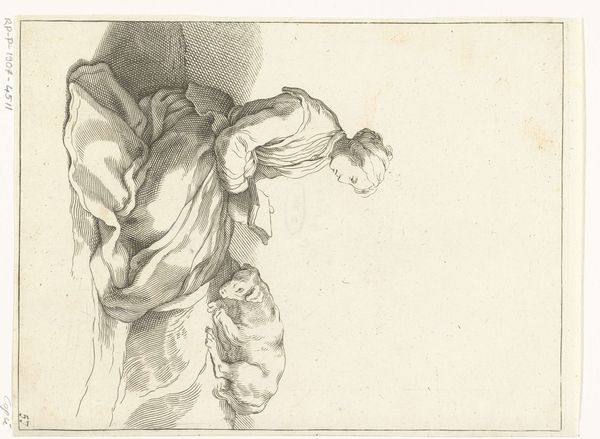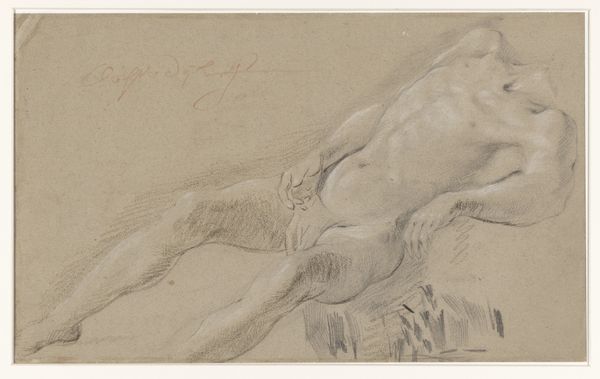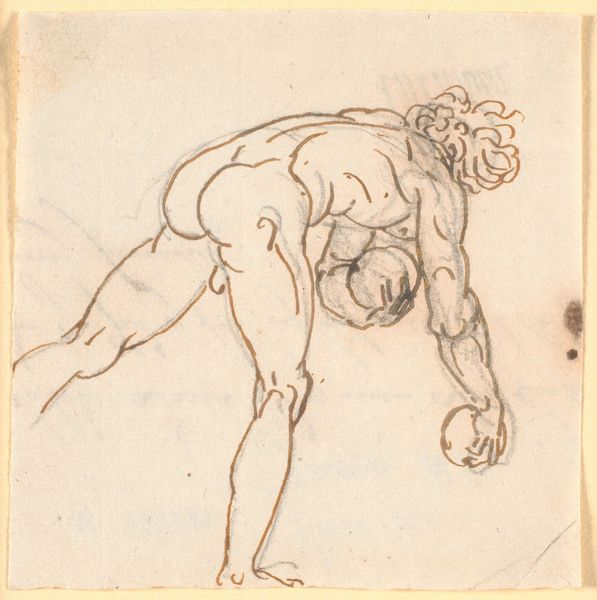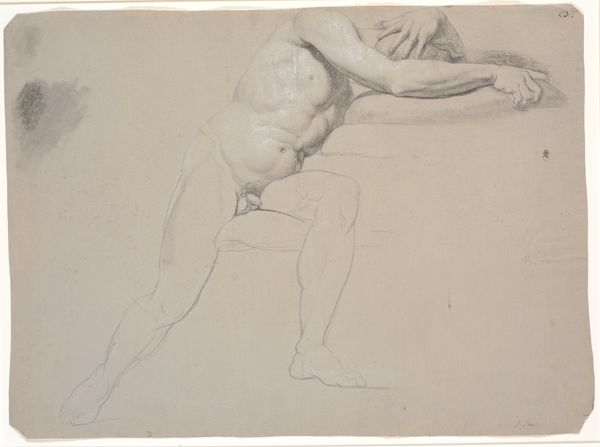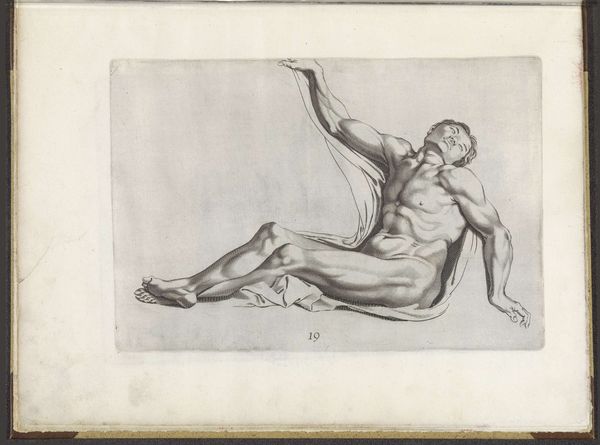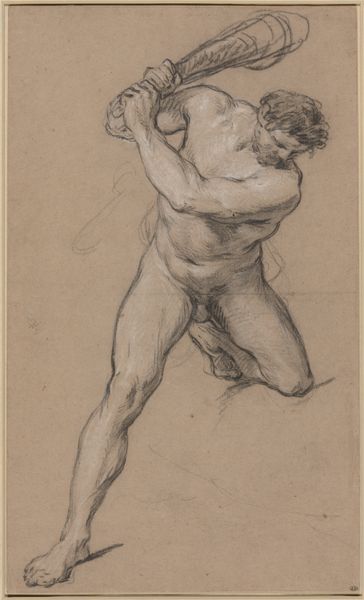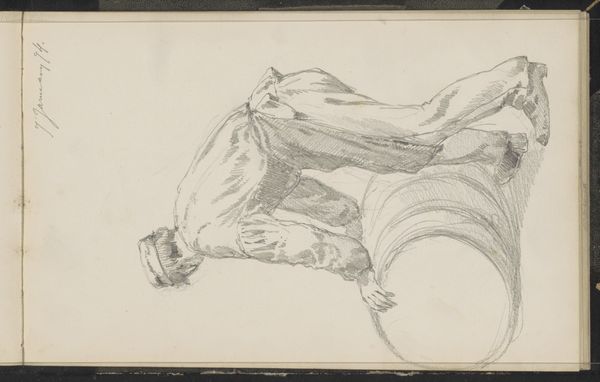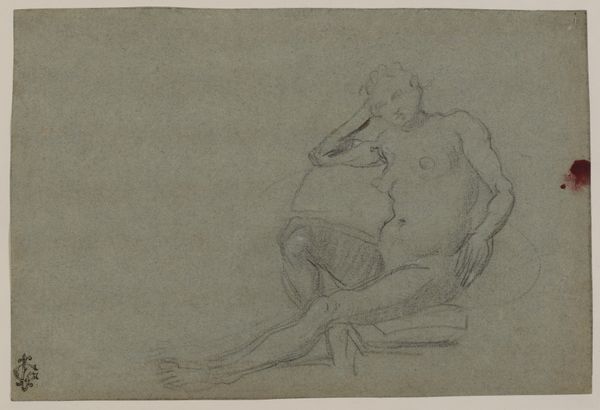
The Dead Christ (recto); Child's Head (verso) c. 1646th century
0:00
0:00
Dimensions: 228 × 351 mm
Copyright: Public Domain
Charles Le Brun made this drawing of The Dead Christ with ink on paper. Le Brun's lines are like paths, some dark and decisive, others light and searching, mapping the figure’s contours and volumes. See how he uses shadow – dense hatching that feels almost velvety – to give weight to the body. And the spare use of line in the legs, creating the tension between presence and absence. The ink feels alive, like it's still wet. That hand, so sharply defined, reaching out into our space. It’s a detail that pulls you in, making you consider the weight of the body and the finality of death. It's a masterful study in capturing the vulnerability of the human form. You might think of the great draftsmen, like Annibale Carracci, whose anatomical studies share this attention to detail. Art is an ongoing dialogue, after all. What do you think this drawing is saying?
Comments
No comments
Be the first to comment and join the conversation on the ultimate creative platform.
